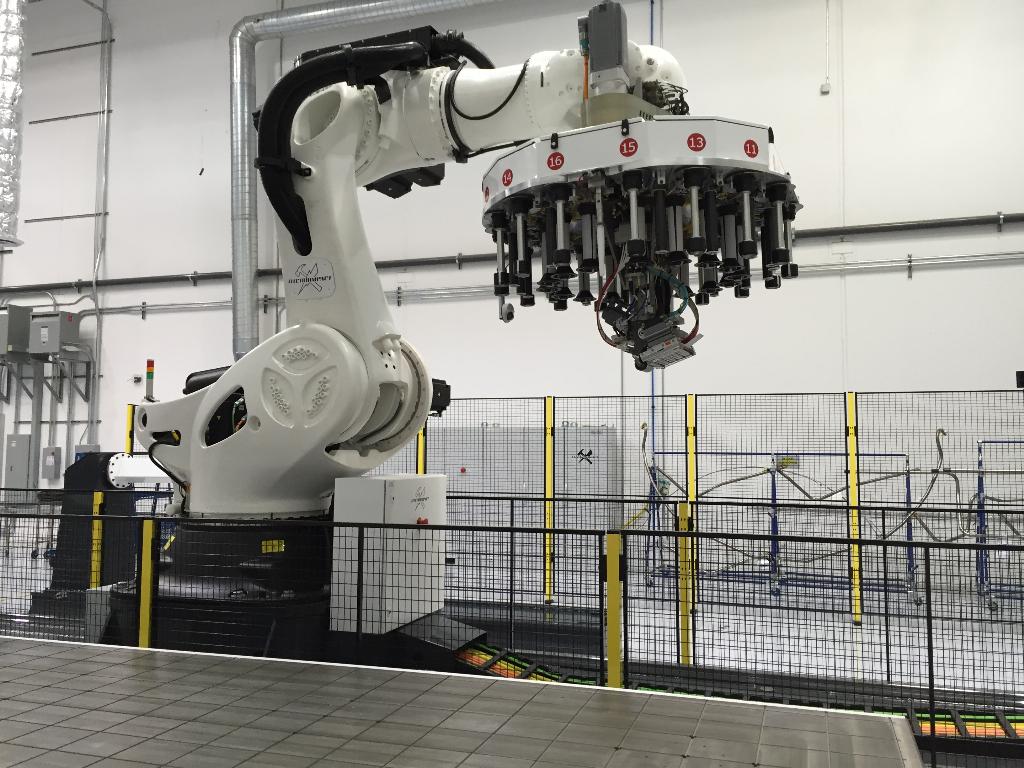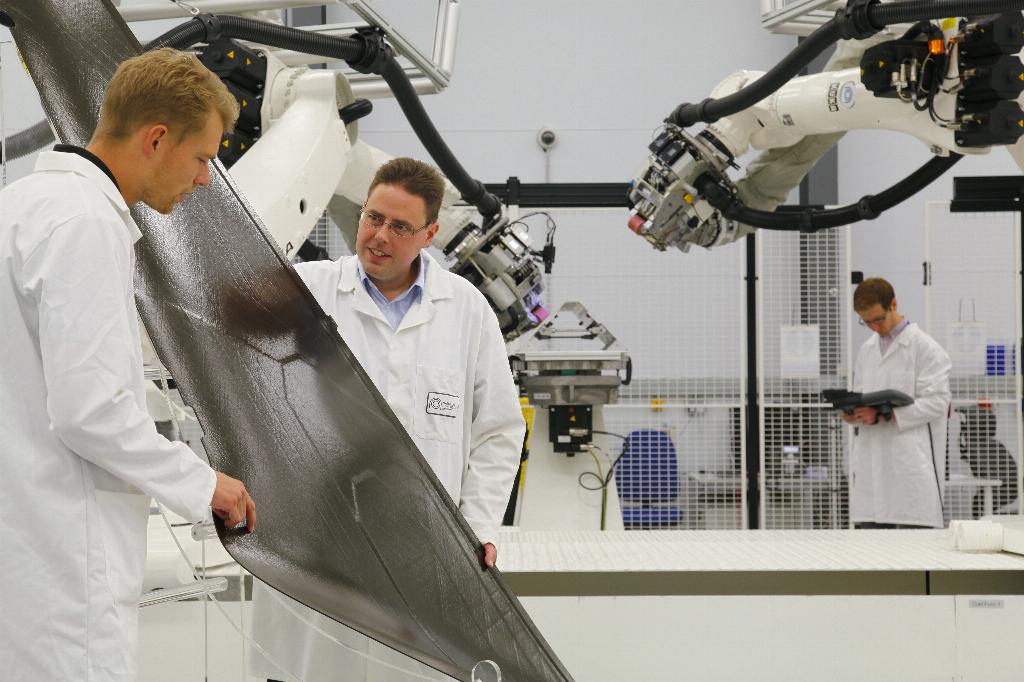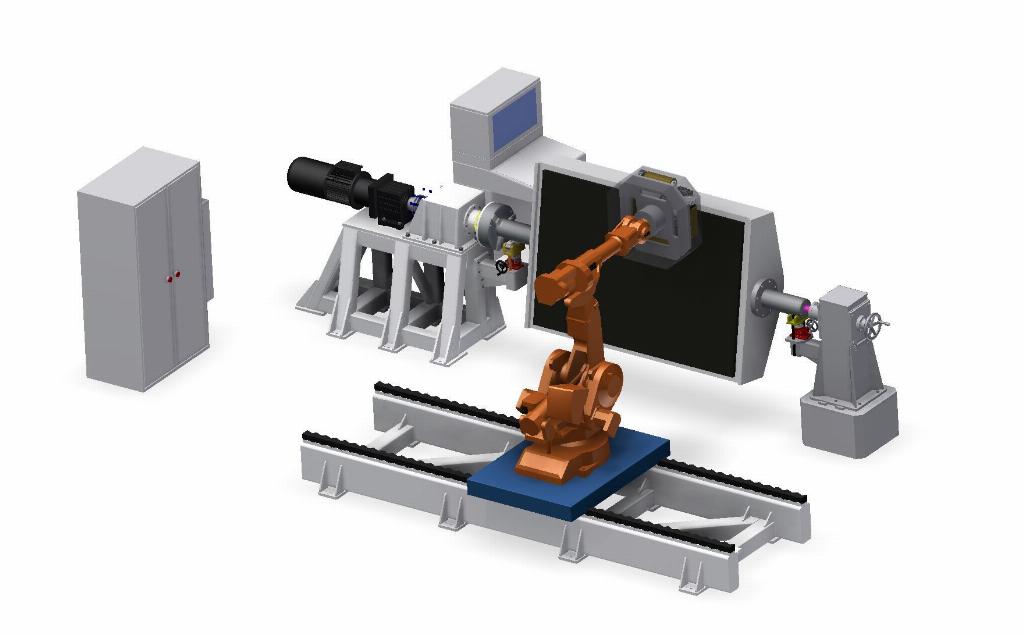Automated layup systems – sweating the assets

The ‘must-have’ production equipment for high value composite layup within the last decade has been an automated tape laying (ATL)/automated fibre placement (AFP) machine, but where is this technology heading now? Dr Neil Calder reports.
Both these processes are automated composites deposition technologies, taking material in a generic input state (as reels of pre-impregnated slit tape or narrower tows) and transforming this into a close-to-form part ready for final curing. There are differences, though, between ATL using single tapes of width up to 300mm and AFP laying down multiple tows which can be as narrow as a hundredth of that, with the latter regarded as offering significantly more geometric and processing flexibility. As AFP can follow tool contours more closely and can steer individual tows this enables greater design complexity, although these additional variables result in an increased engineering effort to optimise the manufacturing process. Flexibility is now offered through dual process equipment with interchangeable deposition heads to access the best of both process variants.
Manu Motilva of MTorres (www.mtorres.es) explains that ATL has been typically used in large relatively easy parts like empennages (VTP and HTP) whereas AFP was typically used in more complex parts like fuselages, etc. Lately, the trend is to use AFP also for ‘easy’ parts like wings skins, spars, stringers as Airbus for example has done on Airbus A350 XWB with significant investment in MTorres equipment.

Follow the leader
In numerical terms, MTorres is the market leader having sold 45 AFPs in the last nine years and 77 ATLs in the last 20. In 2014, they sold 14 AFPs due to the change to AFP for the A350 wings. Expectations for the next five years are not so brilliant, as no major aerospace programme is expected to be launched.
ATL and AFP have previously been associated with large gantries. The market is shifting now as not all applications need a gantry approach and it is not always space and cost efficient to have this. The size of wing skins make it hard to construct an argument for robotic manipulation, but these enable multiple workstations to ease process flow for the smaller parts more typical of high end automotive.
Layup is only one part of a multi stage process, however. Developments in the usage of AFP machines are pointing towards minimising the dead time. There is a strong business driver to sweat the asset to an appropriate level, minimising machine idle time via e.g. rapid deposition head swaps to enable offline material loading. MTorres road map is focused on the online inspection, robot ATL-AFP, lay-up of wider tow (from 0.5inch to 1.5-2.0inch) and lay-up faster (from 60m/min to 100m/min).
Peter Giddings of the NCC (www.nccuk.com) elaborates: “five years ago, the market was predominantly for gantry systems, but this is changing. It is rebalancing as not all applications require the large gantry systems.”
Factors such as geometry for parts and working volume dictate the optimum manipulation approach. Robotic solutions are important to give a range of scale offerings within a flexible solution as these automated deposition technologies move beyond the single part, long aerospace production which has driven the first phase of deployment.
One significant barrier to much greater take-up of this technology outside the aerospace sector which has driven early development is in the recurring cost to engineer design and manufacture of specific parts. There are simply not enough individuals with sufficient experience and capability in this technology area to enable growth. The NCC is seeking to address this though technician course offerings as well as evolving the tools for fully understanding the process physics.

The area of greatest movement in technology is in achieving a degree of digital connectivity between the various parts of the value chain for automated layup. This is confirmed by all the production equipment and technology organisations who contributed to this technology review.
Motilva goes on to state that all MTorres machines are integrated with CAD-CAM environments of their customers. Through its TORFIBER software, the part programming for the machine extends into the CATIA CAE environment, allowing users to then build the trajectory of the machine. “This linked CAE capability is relatively mature,” he explains. “What is less mature is what to do with so much information which is generated through sensors everywhere. The difficult part is the next step forward of big data usage or industry 4.0. We have so much data to use that it is difficult to make good use of it.”
Sensors working overtime
Al Gray of Electroimpact (www.electroimpact.com) explains that AFP machines already provide a rich vein of status and performance information, but the next generation will be even more sensor heavy. He cites some 60 monitored parameters available during operation of existing equipment, with some users only using 3-4 of these. The company’s equipment is shipped with CGTech Vericut VCPE suite of software which extends capability right up to the design engineer. Evolving the idea of cross-platform CAE tools takes a step away from the knife and forking for specific reduction equipment and towards seamless plug and play environment which characterises the industry 4.0 ideal. This will involve close control of deposition head position plus pressure and temperature although the right conditions for tack don’t always deliver a quality output.
Gray expands: “the holy grail is getting into a place where we can define that this piece of material was laid in the correct orientation not just relative to the part but relative to the whole volume of that part, within the working framework of the whole cell. The entire problem is getting the material into the right place.”
The necessity of existing in a highly-controlled 3D space leads developments, even when using robotics, of Cartesian controllers linking into the connected digital space. The quality and tolerance requirements in for high volume production mean that it is desirable to remain in this high accuracy Cartesian space and this drives affordability.

Dimitar Bogdanoski from Mikrosam (www.mikrosam.com) expresses this intent through an offering of €0.5 million machines as entry level investment and which they expect will allow greater use of automated layup.
Motilva continues: “Robotic ATL-AFP is a great entry port for the use of automation. Any tier two that buys a simple 2D ATL can start selling big parts to Airbus - Boeing in a relative short time, increasing supplier portfolio for the big companies.”
Giddings predicts: “There is a need to be able to offer AFP to medium-size companies within the supply chain in a couple of years’ time. Where metal machining was 15 years ago, AFP is just getting to that point now, taking this from a craft to a credible, industrialised process.”









